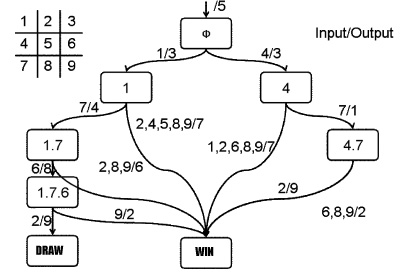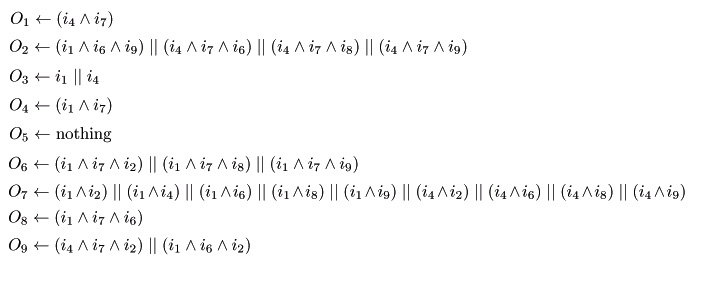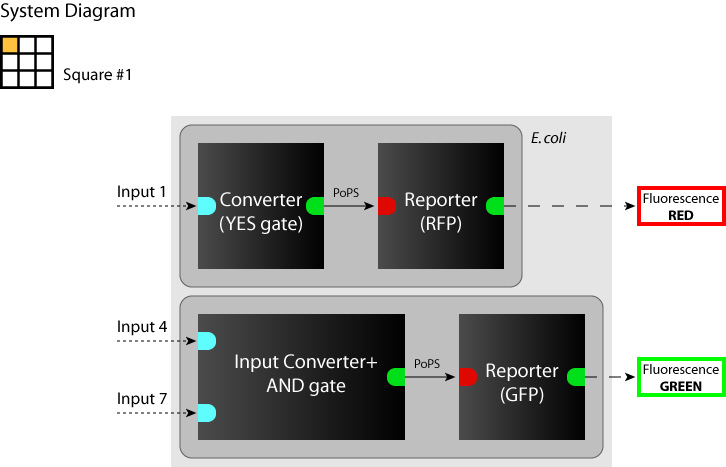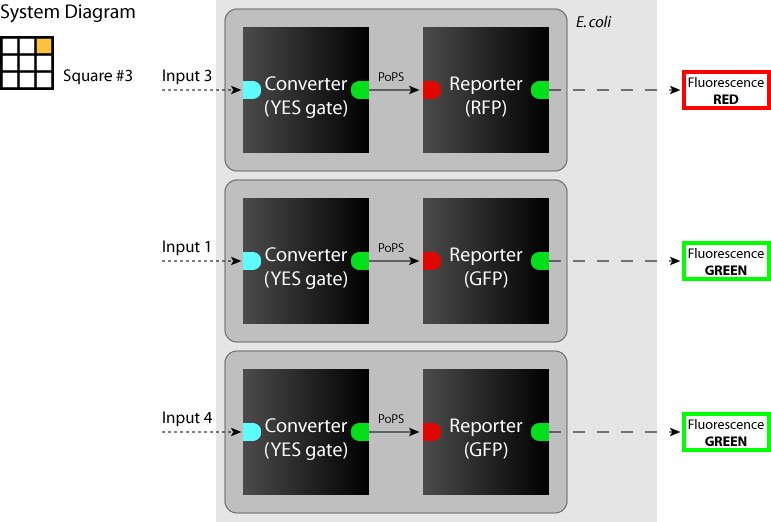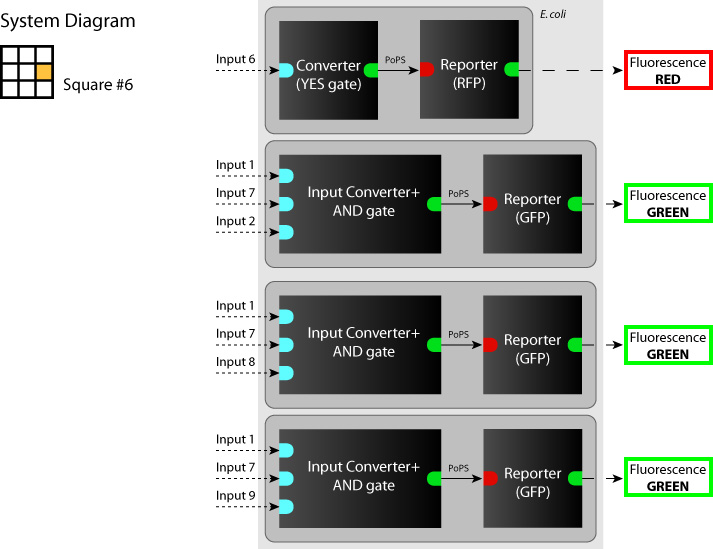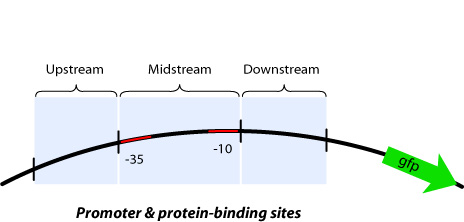Tokyo Alliance: Design/Method
From 2006.igem.org
(Difference between revisions)
| Line 67: | Line 67: | ||
====DNA Construction Procedure==== | ====DNA Construction Procedure==== | ||
| + | |||
| + | *Midstream Parts Insertion | ||
[http://131.112.128.86/downloads/tokyo_mid_insertion.mov Midstream Parts Insertion Procedure (.mov)] (Requires QuickTime) | [http://131.112.128.86/downloads/tokyo_mid_insertion.mov Midstream Parts Insertion Procedure (.mov)] (Requires QuickTime) | ||
Revision as of 19:07, 17 October 2006
Contents |
Systematic design concept/method
Abstraction Phase
State Transition Diagram
- Combination of Noughts-and-Crosses
- 362,880(=9!)[patterns] (sum up all patterns)
- 255,168 (As a game)
- 26,830 (Eliminating symmetrical pairs)
We added the following rules to reduce the number of transition functions and inputs.
- 1st
- SYANAC goes to the center of the board. (sq#5)
- 2nd
- Human goes to the specific corner(sq#1) or the edge(sq#4) of the board.
- 3rd
- SYANAC must choose sq#3
Therefore, SYANAC's conbination patterns and inputs are as follows:
- SYANAC
- 25 combination patterns(Eliminating symmetrical pairs)
- 7 types of inputs
The State Transition Diagram shown right describes SYANAC's behavior based on this rule.
Logic Gates
Here we show you the logic gates of each sq# according to the state transition.
Block Diagram (Device)
Construction Phase
Up/Mid/Downstream
working model
- AND-AND gate (Repressor+Repressor)
- AND-AND gate (Activator+Repressor)
DNA Construction Procedure
- Midstream Parts Insertion
[http://131.112.128.86/downloads/tokyo_mid_insertion.mov Midstream Parts Insertion Procedure (.mov)] (Requires QuickTime)

